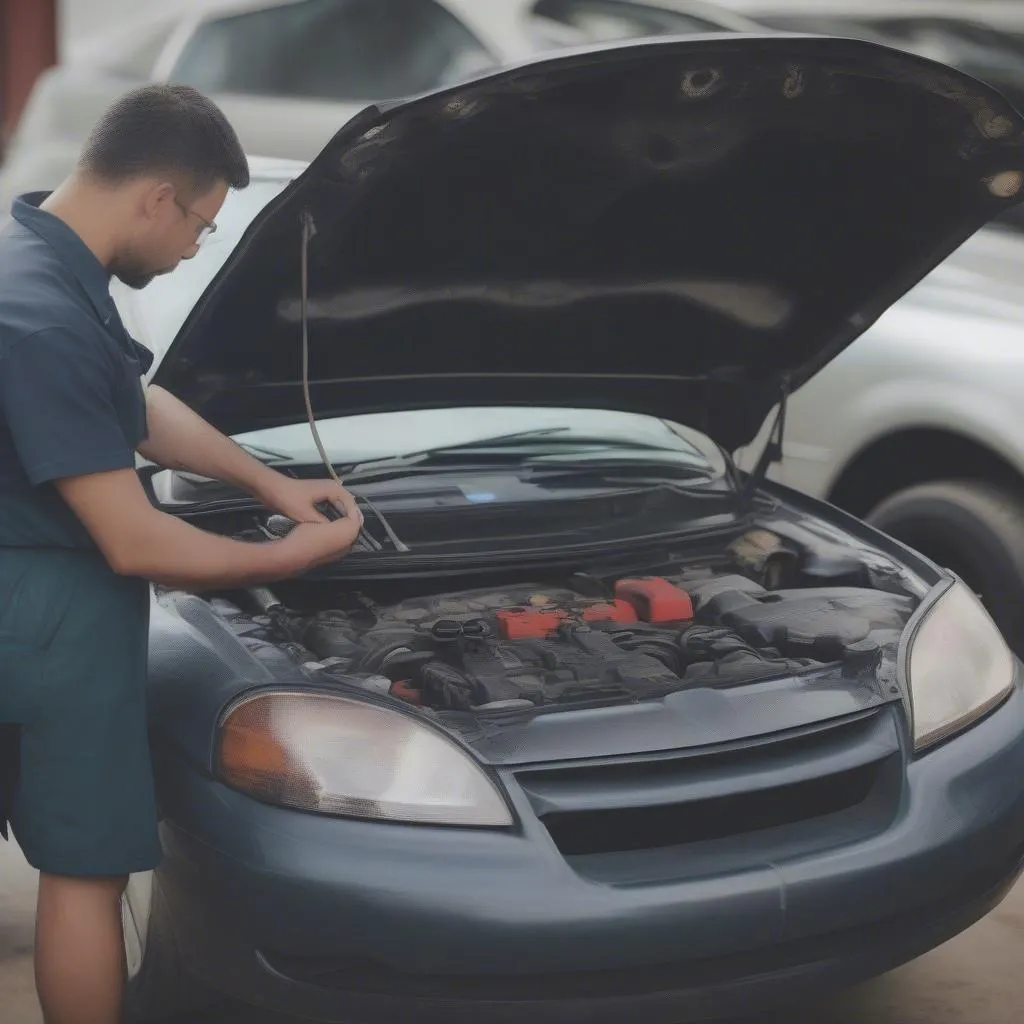A dead car battery is a frustrating experience, especially when you’re in a hurry. Understanding the voltage of a dead car battery is crucial for diagnosing the problem and getting back on the road. This article delves into the specifics of dead battery voltage, providing you with the knowledge to troubleshoot and resolve the issue effectively. car wont start but battery is charged
Understanding Car Battery Voltage
A fully charged car battery should read around 12.6 volts. When the engine is running, this voltage should increase to between 13.7 and 14.7 volts due to the alternator charging the battery. A voltage reading below 12.6 volts can indicate a discharged battery, and anything below 12.0 volts is considered a dead battery. However, voltage alone doesn’t tell the whole story. A battery can show a good voltage but still be unable to start the car due to low amperage or internal damage.
What Causes a Dead Car Battery?
Several factors contribute to a dead battery, including:
- Leaving lights or accessories on: A common culprit. Even small interior lights can drain a battery over time.
- Extreme temperatures: Both hot and cold weather can affect battery performance and lifespan.
- Old age: Batteries have a limited lifespan, typically 3-5 years.
- Parasitic drain: This occurs when electrical components continue to draw power even when the car is off.
- Alternator problems: A faulty alternator can prevent the battery from recharging while driving.
How to Test a Dead Car Battery
Accurately testing your battery’s voltage is essential. Here’s how:
- Gather your tools: You’ll need a multimeter, available at most auto parts stores.
- Safety first: Make sure your car is off and parked in a safe location.
- Connect the multimeter: Connect the red lead of the multimeter to the positive (+) terminal of the battery and the black lead to the negative (-) terminal.
- Read the voltage: The multimeter will display the battery’s voltage.
What to Do With a Dead Battery
If your battery is dead, you have a few options:
- Jump-start: Using jumper cables and another vehicle or a portable jump starter can get you going. trickle charge dead battery
- Trickle charge: A trickle charger slowly recharges the battery over several hours.
- Replace the battery: If the battery is old or damaged, replacement is the best solution.
“Regularly checking your battery’s voltage and addressing any underlying issues can prevent unexpected breakdowns and save you money in the long run,” advises John Smith, Senior Automotive Electrical Engineer at AutoTech Solutions.
Preventing a Dead Battery
Here are some tips to prevent future battery issues:
- Turn off lights and accessories: Double-check before leaving your car.
- Regularly clean battery terminals: Corrosion can interfere with the battery’s performance.
- Have your battery tested regularly: This can identify potential problems before they become major issues.
- Limit short trips: Short trips don’t give the alternator enough time to fully recharge the battery. led lights drain car battery
“A proactive approach to battery maintenance can significantly extend its lifespan and prevent inconvenient situations,” adds Maria Garcia, Lead Technician at CarCare Experts.
2004 jeep grand cherokee battery drain
Conclusion
Knowing the voltage of a dead car battery is the first step in resolving the problem. By understanding the causes of a dead battery, testing procedures, and preventative measures, you can avoid the frustration of a dead battery and keep your car running smoothly. Regular maintenance and proactive checks can save you time and money in the long run. Don’t let a dead battery leave you stranded!

